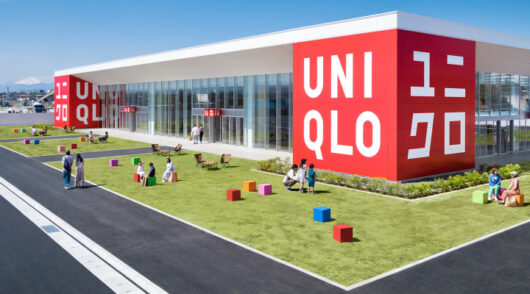Consumers shopping in physical stores are seeking a more personalised and relevant engagement with retailers today, based on their needs and desires – they want more than conversations with sales associates merely trying to sell them something.
Yet while retailers with an omnichannel presence are investing in ensuring their online success, in-store technology that would enhance customer engagement is being neglected, explains Ben Cook, regional VP of growth Apac, with Newstore, a mobile-first Unified Commerce Platform for global retail brands.
Cook is referring to one of the key takeaways from the 2024 Omnichannel Leadership Report. The annual research initiative uses third-party mystery shoppers to assess and rank the online, mobile and in-store shopping experiences of just under 700 brands across North America, Europe and parts of Apac. According to the report, it’s clear that brands have invested the most in their online experiences, while in-store innovations continue to lag behind.
“Lots of retailers talk about customer journeys, and the interaction with customers through how we market to people, about how we’re trying to drive them into a digital frame, such as an e-commerce website – but often 80 per cent of retail is still physical. It is from people walking into stores.
Cook says that for the past 10 to 15 years, retailers have been investing in e-commerce so they can better market to customers online and create personalisation – but it has come at the expense of technology in physical stores.
“We all get the need to be online. But if you are a brick-and-mortar retailer as well, e-commerce is only 20 per cent of your revenue.”
That’s left the level of in-store technology in many retail chains relatively archaic by nature, he says.
“Physical retail is still mostly dominated by point-of-sale systems that are largely on-premise.
“You can walk into any high street store and it looks amazing: great window displays, incredible lighting, different store layouts and designs with different mannequins and different ways in which retailers showcase products – it is all there in a store. But when it comes to the interaction with store associates – which is real person-to-person engagement – customers are being let down.”
Store associates are lucky if they can engage beyond ‘How can I help you?’ because they don’t know who the customer is, they have no insight into their purchase history, they don’t know what their interests are, whether they have kids or not, or if they are likely to be shopping for themselves or someone else.”
The best way to engage with customers in-store is by putting information onto a hand-held device that store associates can then use to start a relevant conversation. Apple was a pioneer in this when it eliminated cashier counters and armed associates with the tools to transact directly with a customer they’d assisted.
“We don’t need POS machines,” says Cook. “If you want a printed receipt, the associate can go and print it out, but it is easier to share the receipt via digital means. They can complete the entire transaction from a mobile phone. So you do not need a fixed point of sale anymore to drag the customer into a corner of the store.”
Newstore came into its own by being able to offer store associates the ability to understand more about who’s walking through the door, and then interact with them in a much more personal and consultative way.
Data is key
Of course, the key to the deployment of such technology is collecting accurate data on a customer’s order history, what they look at in-store or online, collected from all the channels they engage with your brand on in order to build an accurate, historic profile of their demographics, interests and behaviour.
Almost every retailer today has a website presence, so enabling personalisation online and in-store is achievable. However, retailers need to be looking at gathering data from people physically present in stores as well. Here Cook advocates a cautious approach.
For example, online shoppers may get suspicious if they feel they are being asked too much, such as their date of birth. But in-store, an associate can explain that the brand issues birthday vouchers as part of its loyalty program, and the customer might be more willing to share that detail.
“Sometimes capturing that personal information to create a more guided experience can be a more progressive one-to-one interaction from an in-store perspective, more so than online.”
Once the information is collated, it can enhance the customer experience in stores – as long as it’s used correctly, says Cook.
“Customers appreciate it: they want a more friendly engagement. They would much rather someone know who they are and then start catering to their needs rather than being shown something that is irrelevant. It’s a waste of their time if it doesn’t feel like the store staff have done their homework.”
Technology’s growing role in engagement
Technology is key to driving that engagement. From the moment someone enters a store if they have the brand’s loyalty or shopping app on their phone, beacons can alert a store associate via their connected device of the customer’s name, relevant details, purchasing history and even – if the customer has been browsing the store’s website – which products they might be keen to take a look at.
“Retailers should look at the technology they need to support that process and assess whether their current technology facilitates it or not. If it doesn’t, what is a better technology to enable the process?”
That’s the question every brand should be asking itself, according to Cook.
The starting point in selecting suitable technology is thinking about the customer journey – how their stores would like to greet and treat customers and then what information they could use to guide that process.
Investing in technology in-store pays off in the same way as investing online. Customers who experience a more productive, seamless, relevant interaction with a retailer are typically going to spend more on average, be loyal to the brand and make a greater number of transactions over a year.
“All of those things have been achieved in the digital world over the past 10 years. So why not implement them in physical stores, which for most retailers, still account for around 80 per cent of transactions,” challenges Cook.






